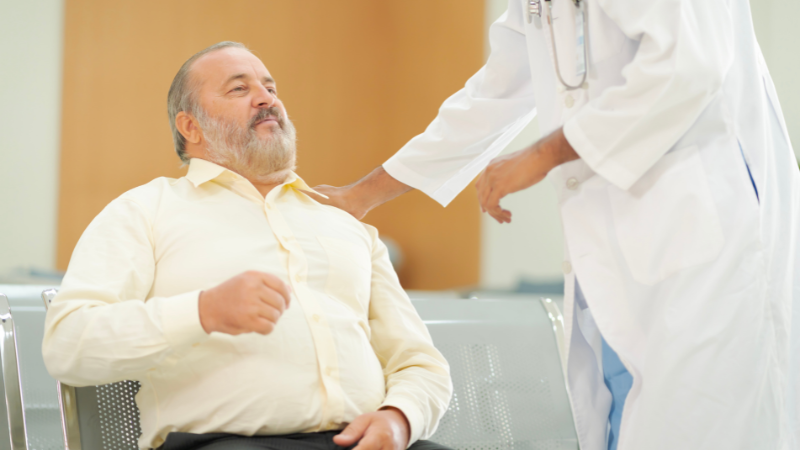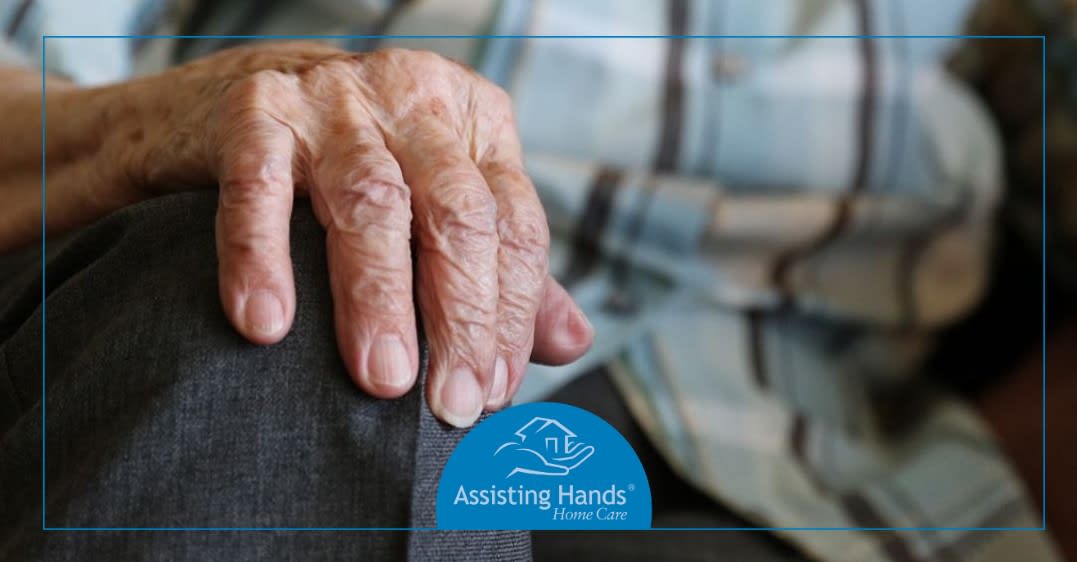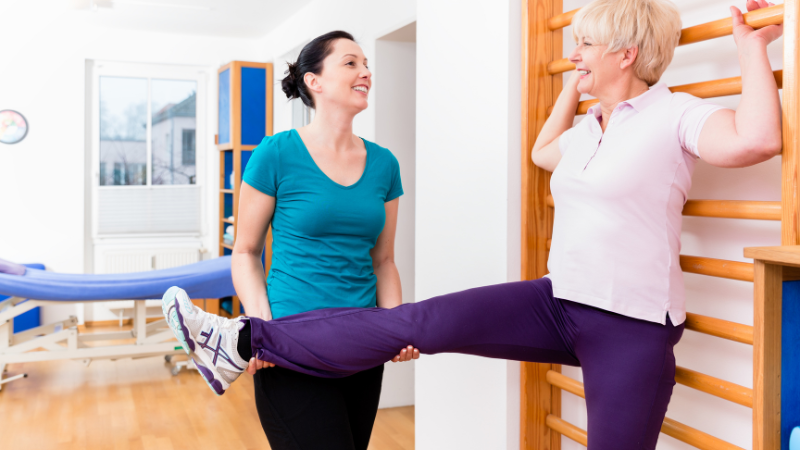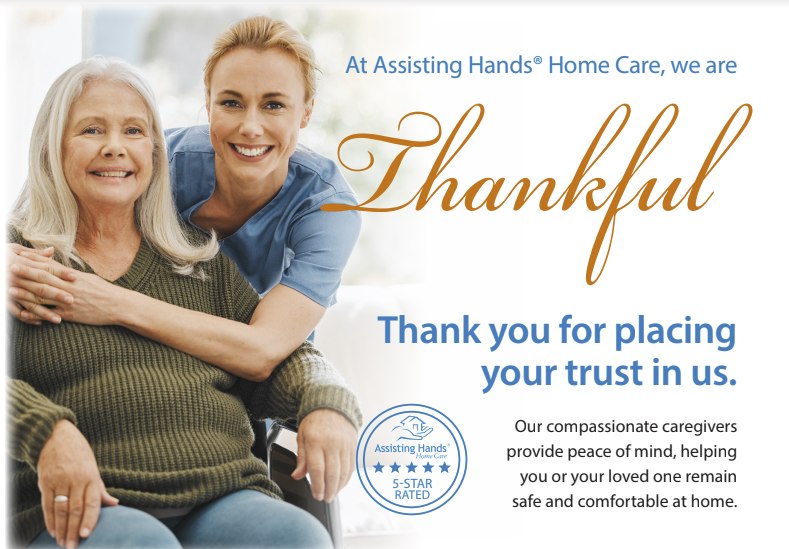

Knee pain is a common complaint among adults, especially for seniors. The reason could be muscle mass decreasing at the age of 40 and it gets thinner after turning 60 or 70. In some cases, weak knees may be a symptom of an underlying medical condition such as gout, osteoarthritis, injury, excess body weight, infections etc. Understanding the underlying causes of knee pain is essential for effective treatment and managing the conditions for your elderly loved one.
The following are some of the common causes that result in knee pain for older adults.
1. Arthritis:
Arthritis is an inflammatory bone disease that affects nearly 20 million seniors in the United States. There are more than 100 types of arthritis. A few of them include osteoarthritis, rheumatoid arthritis, psoriatic arthritis, and fibromyalgia. Over time, the disease causes breakdown of the cartilage in your elderly loved one’s knee causing excessive pain, grinding sounds when moving, and hard tissue damage. If left it untreated, it can make your senior walk with a limp.
2. Gout:
If your aging adult experiences burning pain along with knee stiffness, he or she might be having gout flare in the knee. Gout occurs when the uric acid levels in the blood stream reach an extreme. You may be wondering; how does gout affect the knee? The answer to this question is the building up of excessive uric acid that passes through the kidney, which helps eliminate the acid by urine. In some cases, the kidney can’t process the acid and it later circulates in the body forming crystals and accumulating around the knee.
3. Obesity or Excessive Weight:
A high body weight can put double the amount of pressure on your knees while walking, sitting, or getting up from the couch. Being overweight puts pressure on cells in the knee that are supposed to send out signals to the body for growth and development. With this excess weight, these cells do not send out the right signals, thus the knee gets jeopardized. If you believe your loved one has a high BMI, don’t directly tell them to lose weight as it may be emotionally challenging for them. Encourage them to eat healthy and increase mobility which might result in bringing their weight to the optimum level to help their knees.
4. Lack of Quality Sleep:
Unfortunately, sleep deprivation can cause joint pains for aging individuals. In addition, it may reduce the production of growth hormones which drastically declines at the age of 60. Thus, you may notice your senior loved one having trembling hands, shaky legs, and weakness in the body. Having low-quality sleep also leads to various health problems such as diabetes, obesity, and depression which may sooner or later impact your loved one’s knees.
5. Stroke:
Some of the common effects of stroke include muscle weakness, paralysis, and tightness in the joints or body movements. This muscle stiffness after a stroke or artery blockage is known as spasticity or hypertonia. It can make your elderly loved one walk with a limp.
6. Nutritional Deficiency:
A deficiency of Vitamin D can cause muscle weakness, brittle bones, and joint pain in the elderly. Apart from that, a deficiency in B1 can cause heavy legs, muscle cramps, and weak knees. If you notice your loved one experiencing severe aches in bone and muscles, making standing up and walking difficult, we recommend you get their vitamin level checked before starting any kind of medication or treatment. If your loved one has a good appetite, we recommend supplements like Vitamin D, Magnesium, Calcium that are good for weak knees.
7. Slipped Disc:
There is a strong relationship between your back and knees. If your elderly loved one has a herniated disc or is experiencing chronic pain in their spine, from either a bad fall or an accident, they will immediately change their posture and walk differently to eliminate the pain. This can put pressure on their ligaments and damage the knee.
8. Sedentary Behavior:
Did you know inactivity is hard on your knees? Does your loved one spend a lot of time sitting and not much time moving? Sedentary behavior is inactive behavior that may include watching television and reading while sitting on the couch for hours. The reduced mobility can cause muscle tightness in joints, resulting in terrible knee pain.
Now the question is, can seniors regain their leg strength to have better knees? The answer is yes. The following are the recommended leg strengthening exercises for seniors to try at home under the supervision of your family caregiver.
5 Best Knee Strengthening Exercises for Seniors and the Elderly
- Knee extension: This exercise targets the hips and knees and helps reduce pain that is caused by arthritis or gout. Ask your caregiver to assist your senior loved one while performing this activity. How do you do this exercise? Begin by asking your loved one to be seated on a chair with their arms and back rested. While staying seated, encourage them to raise their right leg off the floor and extend it to a 90-degree level and then slowly bring it down to the floor. Repeat the same motion with the other leg 10 times.
- Step ups: This activity will help seniors achieve stability and strength in their legs and knees and will prevent any falls. How to do this exercise? Encourage your older adult to step up to a step or small platform, alternating between the right and left foot 8 times a day.
- Pillow Squeeze: This move reduces back and hip pain and strengthens the knee. How to do this exercise? Have your loved one lie on their back on a flat surface with both knees bent and pointed toward the ceiling. Place a cushion between the knees and ask them to squeeze their knees together. Hold for 6 counts, then ask them to relax their knees.
- Walking: For an easier work out, encourage your senior to walk. It is the simplest and most beneficial form of exercise for anyone. Encourage your loved one to get up from their couch and go for a brisk or a slow walk for 30 minutes in the morning and evening. This will increase mobility and help strengthen the legs and knees.
- Sit to Stand: The best way to improve senior mobility is to perform sit-to-stand exercises. Make sure to have a sturdy chair so your loved ones don’t slip while doing this activity. Repeat the motion of sitting and getting back up at least 20 times a day.
- Squats: We recommend that your senior loved one performs this activity with the help of a chair or kitchen counter under careful supervision from you or your home caregiver.
How to do this exercise: Ask your loved one to stand next to a kitchen top or at the back of the chair for support. With their feet wide apart, ask them to squat down to a comfortable distance, keeping their body weight on their heels. While doing this activity, make sure they use their legs and not arms to help them bend down.
Seek Elder Home Care Services
It is perfectly normal to be concerned about having weak knees, especially for adults who enter senior age. If you have an elderly loved one who has been experiencing weak knees and could use some help around the home, reach out to us for home-care assistance in Westlake, Avon, Avon Lake, and surrounding areas, Ohio. We specialize in senior home care services and can help change your older adult’s lifestyle for the better. Call one of our care managers today at Assisting Hands at 440-517-4623.




